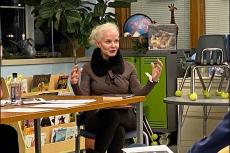Having spent most of my life in small towns, I’m used to hearing gossip almost anywhere I go. Since the pandemic started, and particularly because most folks in my town know that I’m a doctor, much of what people talk to me about has touched on Covid-19.
And lately, I’m hearing more and more about Covid-19 breakthrough infections. The term “breakthrough infection” in general refers to an infection occurring in someone who has been vaccinated against said infection. In a world in which so much time and effort has been spent in public health in crafting a narrative of how a robust vaccination effort against Covid-19 is one of our key means out of the pandemic, concern about breakthrough infections is understandable. Why, some ask (particularly those who are skeptical about these new vaccines to begin with), are these infections happening if the vaccines are supposed to be so good and reliable?
The answer, of course, can be found in statistics. The vaccinations against Covid-19, as many have written about over and over, are highly effective, most significantly against serious illness that requires hospitalization and/or could result in death. This has been consistently true since the vaccines were introduced. For example, in September 2021, unvaccinated people had an almost six-times-greater risk of testing positive for Covid-19 compared to fully vaccinated individuals and a 14-times-greater risk of dying from Covid-19. These numbers reflect the continued strength of the vaccines in terms of protection, even after the more contagious Delta variant became the dominant strain in the United States.
Moreover, those numbers from September showed continued protection even as new studies were beginning to highlight the fact that vaccine protectiveness after initial vaccination (the two-dose series from Pfizer or Moderna or the single Johnson and Johnson dose) started to wane, which led to the recent recommendations for “booster” vaccinations to be given. Yes, booster efforts are a key next step, but the vaccines remain reliable.
Yet a drastically reduced risk still means that there is some risk, even for those who are vaccinated, to become ill; while the vaccination effectiveness, particularly after booster vaccination, is likely over 90 percent, that does not mean 100 percent, so some infections must be expected and planned for, as that is the very nature of statistics. Wearing a seatbelt, for example, does not guarantee that someone will survive an automobile accident, but it does drastically improve the odds of their doing so.
And that is the message that we should be focusing on in terms of the vaccinations, especially as we head into the winter season with case numbers again rising in the United States. There is no single intervention that will end this pandemic. Instead, the combination of continued efforts at mask wearing, testing before gatherings or after exposure, and booster vaccinations when advised remain our very best evidence-based approaches to keeping as many people as safe as possible and reducing the burden on our health care systems. It will not be perfect. We must expect infections, including some in those who have been vaccinated.
But while some will point at breakthrough infections and the persistent waxing and waning of case numbers as somehow being proof that the vaccination effort has failed, such reasoning does not take into consideration how much worse things would be without the above efforts, especially for the most at-risk individuals. The above numbers highlight the much, much higher risk of dying in unvaccinated individuals, a number that seems to be consistently in the 14-times-greater range, and give us a glimpse of how much dreadfully worse the pandemic could have been in the absence of vaccinations. Instead of focusing on the negative, we must determinedly be grateful for the many lives that have been saved because of what we have done so far.
As we head into the holiday season and face the possibility of case numbers rising once more, let us hope we will all keep these most dramatic and important statistics in mind as we continue our efforts to keep ourselves and our communities safe.
—
Joshua Potter, D.O., a physician with Stony Brook Southampton Hospital’s Meeting House Lane Medical Practice, oversees the practice’s Shelter Island office. He specializes in family and neuromusculoskeletal medicine. Opinions expressed in this column are his personal and professional views and not necessarily those of his employer.



